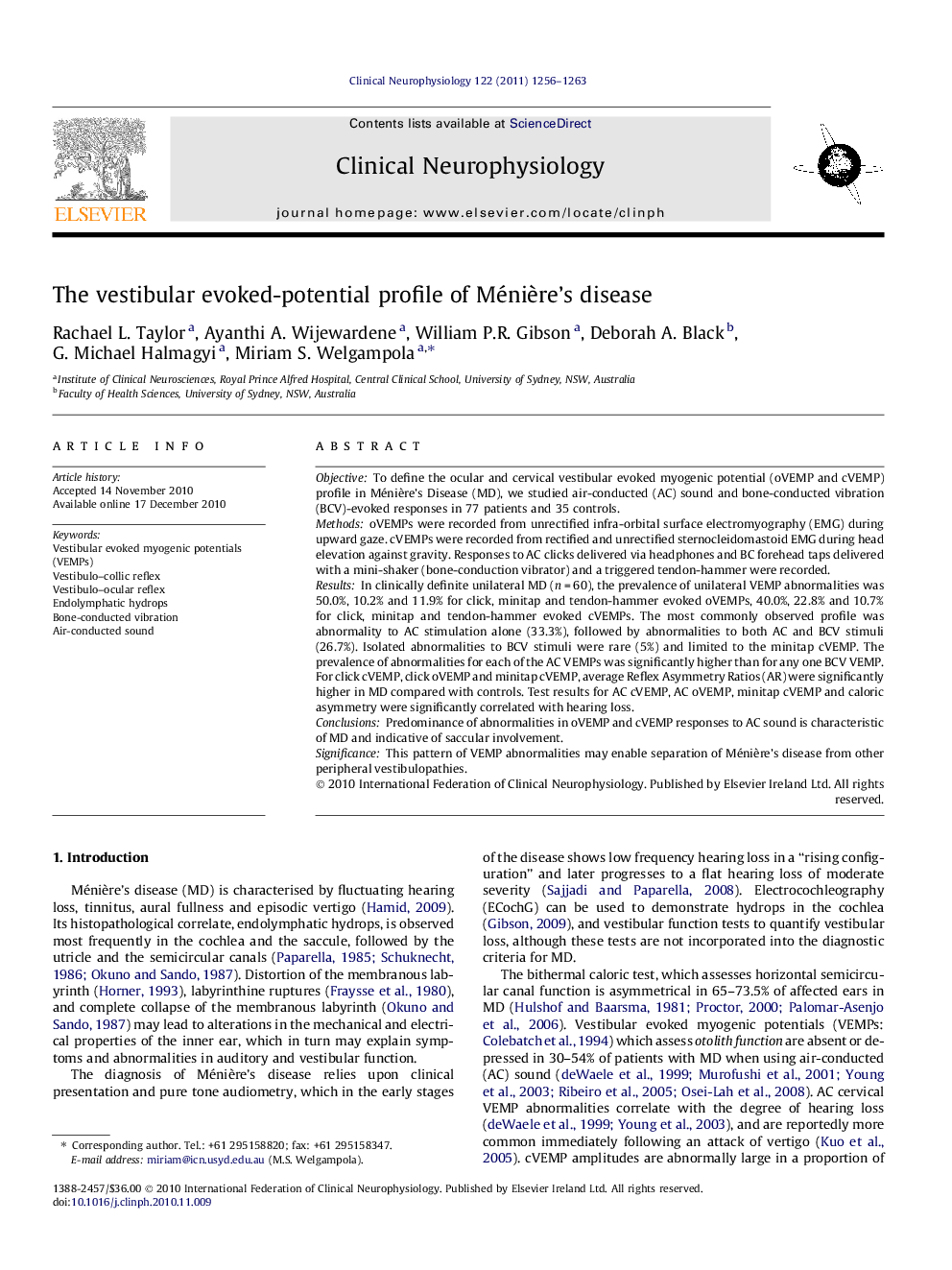| Article ID | Journal | Published Year | Pages | File Type |
|---|---|---|---|---|
| 3044308 | Clinical Neurophysiology | 2011 | 8 Pages |
ObjectiveTo define the ocular and cervical vestibular evoked myogenic potential (oVEMP and cVEMP) profile in Ménière’s Disease (MD), we studied air-conducted (AC) sound and bone-conducted vibration (BCV)-evoked responses in 77 patients and 35 controls.MethodsoVEMPs were recorded from unrectified infra-orbital surface electromyography (EMG) during upward gaze. cVEMPs were recorded from rectified and unrectified sternocleidomastoid EMG during head elevation against gravity. Responses to AC clicks delivered via headphones and BC forehead taps delivered with a mini-shaker (bone-conduction vibrator) and a triggered tendon-hammer were recorded.ResultsIn clinically definite unilateral MD (n = 60), the prevalence of unilateral VEMP abnormalities was 50.0%, 10.2% and 11.9% for click, minitap and tendon-hammer evoked oVEMPs, 40.0%, 22.8% and 10.7% for click, minitap and tendon-hammer evoked cVEMPs. The most commonly observed profile was abnormality to AC stimulation alone (33.3%), followed by abnormalities to both AC and BCV stimuli (26.7%). Isolated abnormalities to BCV stimuli were rare (5%) and limited to the minitap cVEMP. The prevalence of abnormalities for each of the AC VEMPs was significantly higher than for any one BCV VEMP. For click cVEMP, click oVEMP and minitap cVEMP, average Reflex Asymmetry Ratios (AR) were significantly higher in MD compared with controls. Test results for AC cVEMP, AC oVEMP, minitap cVEMP and caloric asymmetry were significantly correlated with hearing loss.ConclusionsPredominance of abnormalities in oVEMP and cVEMP responses to AC sound is characteristic of MD and indicative of saccular involvement.SignificanceThis pattern of VEMP abnormalities may enable separation of Ménière’s disease from other peripheral vestibulopathies.
